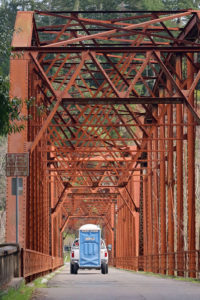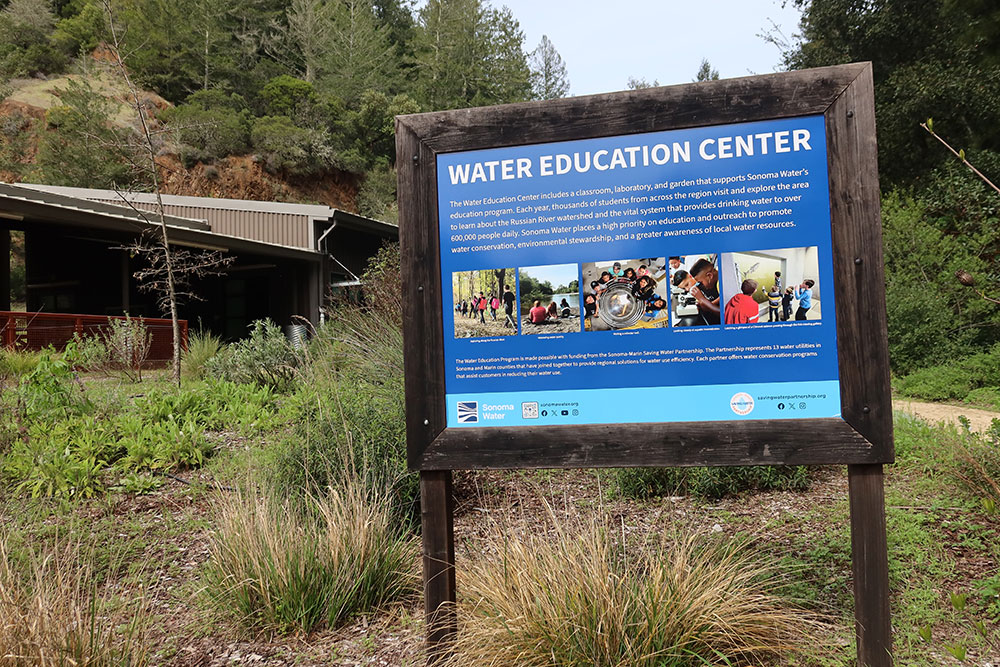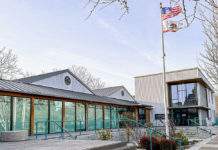
The county’s Department of Public Infrastructure has announced a schedule for rebuilding the Wohler Bridge, a historic steel-truss span over the Russian River less than six miles from Healdsburg. The bridge is located on Wohler Road, between Westside Road and Eastside Road, downstream from Riverfront Regional Park and upstream from Steelhead Beach.
Construction will begin on April 1, and the bridge will be closed throughout the summer. The expected completion date is Oct. 15, depending on weather and other factors.
Public Infrastructure (formerly Transportation and Public Works) has produced maps and videos to explain appropriate detours during this period.

The Wohler Bridge was built in 1922, which makes the span over 100 years old and overdue for improvement. It’s a stately historic structure that is too narrow for two lanes of traffic, and signs are posted at either end telling drivers to yield right-of-way to westbound traffic.
Drivers and pedestrians readily acknowledge that the bridge needs an upgrade, as it shudders and sways when a heavy vehicle crosses.
The bridge is described by the county’s inventory as “a three-span Parker through-truss bridge [that] features pedestrian concrete window rails and ornamental brackets.” It is eligible for listing on the National Register under Criterion A as a locally important crossing, and under Criterion C as “a distinctive example of a long (233 feet) pin-connected Parker through-truss bridge built by master bridge builder American Bridge Company.”
HistoricBridges.org, a volunteer group based in the Midwest, notes that it is “an uncommon example of a pin-connected Parker truss.” It is 768 feet long overall, with the main span 230 feet. Its roadway is listed at 16.7 feet wide.
Construction
In February, the Board of Supervisors awarded an $18 million construction contract for the seismic retrofit of the bridge over the Russian River, located 10 miles northwest of Santa Rosa. The existing seismically deficient one-lane bridge will receive a new lightweight concrete deck, seismic isolation bearings and joints, steel-truss reinforcement and foundation reinforcement designed to meet current seismic design standards for bridges.
The design preserves the bridge’s iconic architectural appeal while also meeting state requirements, said a spokesman for the department. Since it’s a retrofit and not a widening, it will remain a one-lane passage.
Following project approval by Caltrans in 2023, the Federal Highway Bridge Program committed to funding 100% of the project cost, which is expected to be $17,994,621. Ghilotti Construction Company, Inc. was awarded the contract as the lowest bidder following a competitive bidding process that included bids from four different construction companies.
During construction, vehicles will be diverted on Eastside Road, Hwy 101 and Westside Road to access Wohler Road. The County’s Public Infrastructure press release on the closure includes three maps with turn-by-turn instructions for navigating around the bridge, and a video on the department’s social media page at facebook.com/SonomaCoPI follows every turn and straightaway in the route, albeit without sound.

Water Education Center
A small fishing access park is located on the west side of the bridge, with picnic facilities and ramp river access, from Oct. 1 through May 15 with the purchase of a seasonal access key.
It shares a parking lot with the Water Education Center. Though not a public visitors center, the building has a classroom, laboratory and garden supporting Sonoma Water’s expansive education program.
Many public schools in the county enjoy programs at the Water Education Center and elsewhere in Sonoma Water’s network, such as site visits during the school year for kindergarteners, third graders and fifth graders.
The center is open to the public when Sonoma Water hosts water transmissions tours; anyone interested should register at sonomawater.org/tours.
The annual inflatable dam on the Russian River known as the Wohler Dam, usually in place in summer months, is downstream of the bridge location, and neither will affect the other. The inflatable dam assists with drinking water distribution during periods of low water flows on the Russian River.







